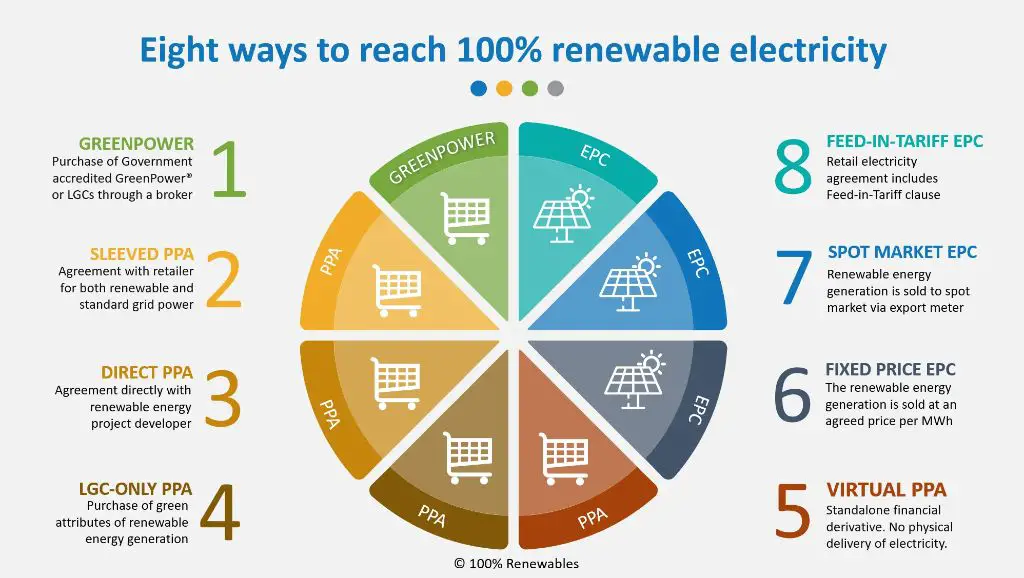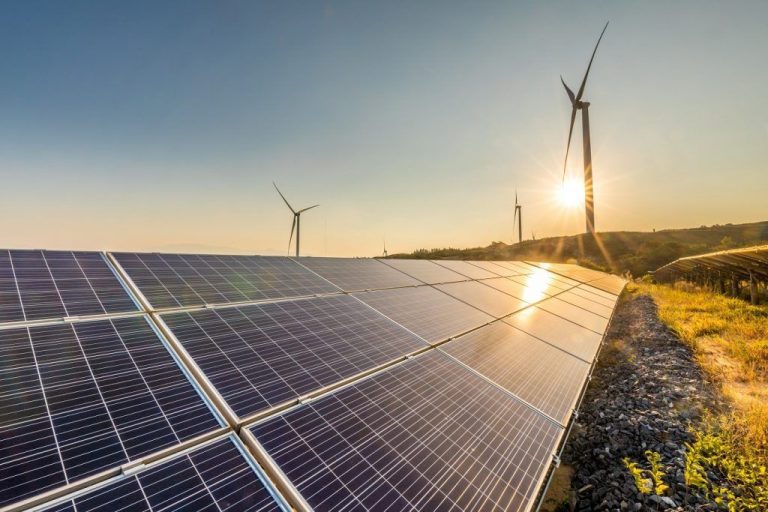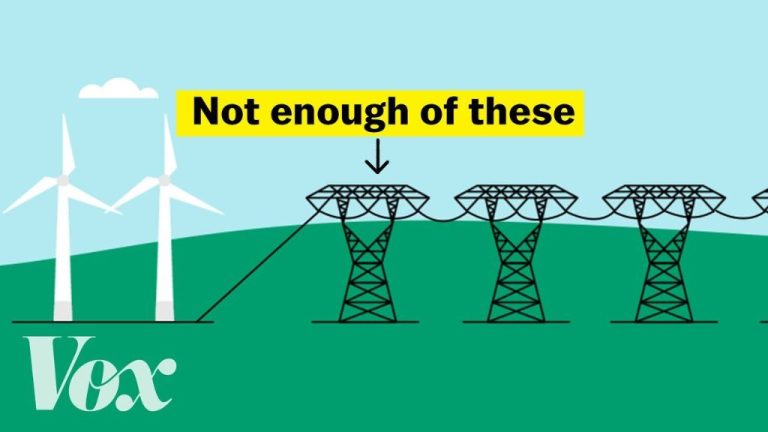What Is 100% Renewable Electricity?

100% renewable electricity refers to an electricity system where all of the power comes from renewable energy sources like wind, solar, hydropower, geothermal, and biomass. This means eliminating fossil fuel sources like coal, natural gas, and nuclear power. There has been growing interest in transitioning to 100% renewable electricity due to concerns about climate change and the desire for energy independence. Many local and state governments, corporations, and countries have set ambitious goals to reach 100% renewable electricity within the next few decades. This is driven by the declining costs of renewable energy technologies and their improving competitiveness with fossil fuel sources.
According to a report by the Union of Concerned Scientists, the United States could reach 100% renewable electricity nationwide by 2035 using existing commercially available renewable technologies. This would require policies to accelerate the transition including stringent carbon pricing, clean energy standards, infrastructure upgrades, and other regulatory reforms. The Biden administration and many states have proposed plans and targets for achieving 100% clean electricity by 2030 or 2035. While an energy transition of this scale poses technical and economic challenges, multiple studies have concluded it is technically feasible with current technology at manageable costs.
Renewable Energy Sources
Renewable energy comes from natural sources that are constantly replenished. There are five major types of renewable energy: solar, wind, hydropower, geothermal and biomass. Some key details on each source:
- Solar power harnesses energy from the sun using technologies like photovoltaic panels and concentrated solar power. Solar is versatile and can be used for electricity, heating, and cooling. Source
- Wind power captures the wind’s kinetic energy with wind turbines and converts it into electricity. Wind power is one of the fastest growing renewable sources. Source
- Hydropower generates electricity by using falling or fast-moving water to spin turbines. Reservoirs or dams are often built to control water flow. Source
- Geothermal energy harnesses heat inside the earth to provide heating, cooling and electricity generation. Technologies like geothermal heat pumps can tap into shallow ground to control building temperatures. Source
- Biomass converts organic matter like plants, wood waste, and garbage into energy through processes like combustion, fermentation, or decomposition. Biomass can provide electricity, transportation fuels, and heat. Source
Benefits of 100% Renewable Electricity
Transitioning to 100% renewable electricity offers many benefits for the environment, economy, and society. Some of the key benefits include:
Reduced Greenhouse Gas Emissions: Renewable energy sources like solar, wind, and hydropower produce little to no greenhouse gas emissions compared to fossil fuels. Increasing renewable electricity to 100% would significantly reduce emissions from the power sector, which accounts for 25% of total U.S. emissions (UCSUSA, 2022). This is crucial for mitigating climate change.
Energy Independence: Renewable electricity from domestic sources enhances energy independence and security by reducing reliance on imported fossil fuels prone to price volatility and supply disruptions. America could become a leading exporter of clean energy technologies with an aggressive transition (OneEarth, 2022).
Cost Savings: The costs of renewables like solar and wind have declined dramatically, making them cost competitive with fossil fuels in many markets. Transitioning to 100% renewables could yield net savings of $321 billion by 2050 compared to a business-as-usual approach, mainly by avoiding climate damages (UCSUSA, 2022).
Job Creation: Expanding renewable energy creates employment opportunities and economic growth, especially in manufacturing, construction, and installation. The number of jobs in renewable electricity could reach 25 million globally by 2050 (IRENA, 2022).
Challenges
Achieving 100% renewable electricity faces several key challenges. One major challenge is the intermittent nature of wind and solar power. The output from these sources fluctuates based on weather conditions and time of day, making it difficult to perfectly match supply with demand at all times without some form of energy storage or backup power.1
To deal with intermittency, substantial investments are needed in energy storage technologies like batteries or pumped hydro storage. Upgrades to electric grids are also required to handle two-way power flows and smooth integration of variable renewables. Smart grids with advanced forecasting, controls, and real-time pricing can help match renewable generation to load.2 However, at very high renewable penetrations, multi-day storage and significant overcapacity may still be needed to ensure reliability during prolonged weather events.3
Energy Storage
Energy storage technologies are critical for enabling high levels of renewable energy on the grid. They allow excess renewable energy to be stored and discharged when needed. Some key storage technologies for renewable energy include batteries, pumped hydro, compressed air, and thermal storage.
Lithium-ion batteries have become the dominant battery technology for grid-scale storage due to their high energy density, falling costs, and flexible siting compared to alternatives like flow batteries or lead-acid batteries [1]. Battery storage systems can rapidly respond to fluctuations in supply and demand to stabilize the grid.
Pumped hydro storage accounts for around 95% of utility-scale energy storage worldwide [2]. It works by pumping water uphill when energy demand is low to store potential energy, then releasing it through hydro turbines when demand is high. Pumped hydro provides large-scale, long-duration storage, but sites are geographically constrained.
Compressed air energy storage (CAES) stores excess energy by compressing air in underground caverns or tanks. The high-pressure air can be released to drive a turbine when needed. CAES can accommodate large capacities for long durations but depends on suitable geology [3].
Thermal energy storage like molten salt can retain heat in insulated reservoirs. Concentrating solar plants can store excess daytime heat for use at night. Thermal storage supports dispatchable renewable energy generation.
Smart Grids
Smart grids utilize digital communications technology, data analytics, and advanced control systems to enable two-way communication between utilities and end users (How the Smart Grid Promotes a Greener Future). This allows the grid to dynamically balance electricity supply and demand, as well as integrate more renewable energy sources like solar and wind power (The Role of Smart Grids in Integrating Renewable Energy). Smart grids improve efficiency through real-time monitoring of grid performance, automated outage management, and targeted upgrades (Smart grids – IEA). Overall, smart grids provide the flexibility and resilience needed for 100% renewable electricity.
Examples
There are several places around the world that have already achieved 100% renewable electricity:
Iceland generates 75% of its electricity from hydropower and 25% from geothermal, making it one of the first countries to reach 100% renewable electricity.
The German state of Mecklenburg-Vorpommern generates all of its electricity from renewable sources like wind, solar, and biomass. It reached 100% renewable electricity in 2011.
In 2015, the city of Aspen, Colorado became the third US city to hit 100% renewable electricity, through its municipal utility Aspen Electric. They use a mix of hydroelectric, wind and solar power.
Other places like Denmark, Uruguay, Scotland, and Costa Rica are approaching or have already surpassed 90% renewable electricity generation.
Policy Support
Government policies play a critical role in incentivizing and mandating the transition to 100% renewable electricity. Key policies include:
Incentives – Tax credits, rebates, and grants can make renewable energy more affordable and attractive for utilities and consumers. The federal investment tax credit (ITC) has been instrumental in boosting solar energy growth in the U.S. Rhode Island offers rebates for renewable energy projects.
Mandates – Renewable portfolio standards require utilities to source a specific percentage of electricity from renewables. As of 2022, 30 states had RPS policies with targets up to 100% renewable electricity.
Power purchase agreements – Utilities can agree to long-term contracts to buy electricity from renewable energy producers at fixed prices, providing revenue certainty.
Carbon pricing – Putting a price on carbon emissions, through carbon taxes or cap-and-trade systems, can make fossil fuels less competitive compared to low-carbon renewables.
Public Opinion
Surveys show strong public support for increasing renewable energy sources like wind and solar over fossil fuels. A 2018 Vox article referenced a 2016 Pew poll that found 89% of Americans favor expanding solar and 83% support more wind turbines. The Yale Program on Climate Change Communication also found 71% of registered voters are willing to pay more on their electric bills to support renewable energy development. This suggests many Americans prioritize renewable energy adoption even if it costs more, indicating strong public opinion in favor of transitioning away from fossil fuels.
Outlook
Projections show strong growth ahead for renewable electricity. According to a study from the National Renewable Energy Laboratory, renewable electricity generation could grow from 21% of U.S. electricity generation in 2020 to 42% in 2030 and 62% in 2040 if current state and federal policies remain in place (1). With additional supportive policies, renewable electricity generation could reach 74% by 2035 and 90% by 2050.
Major corporations have committed to transitioning to 100% renewable electricity, including Amazon, Apple, Google, Microsoft, and Walmart (2). Over 280 cities and towns across the U.S. have also made commitments to 100% renewable electricity. This growing demand from the private sector will encourage further development of renewable energy projects and infrastructure.
Countries like Denmark, Uruguay, and Iceland already generate over 90% of their electricity from renewable sources and serve as pioneers demonstrating the feasibility of 100% renewable electricity (3). As costs continue to fall and supportive policies expand, achieving 100% renewable electricity in the U.S. and globally appears increasingly within reach.






